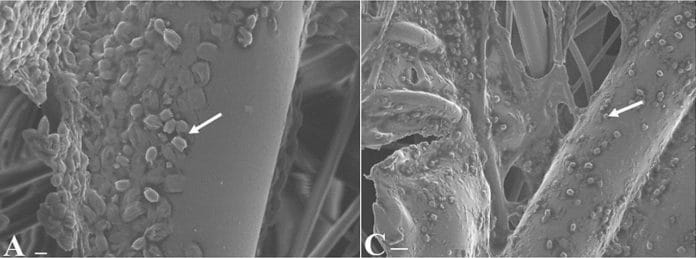Surgical gowns and other apparel masks, footwear, gloves) fill two needs: 1. protecting patients from microorganisms conveyed by the surgical team or patients themselves, and 2. protecting healthcare services from contact with irresistible microorganisms harbored by the patient.
However, a new study by the University of Plymouth suggests that surgical gowns used in hospitals retain superbugs. Even after single use, the gowns had been infected with superbug Clostridium difficile (C difficile), even after being treated with the recommended amount of disinfectant.
Subsequent to treating contaminated things for ten minutes with disinfectant containing 1,000 parts per million of chlorine – the amount and time suggested by the Department of Health and Social Care–the group found that all strains of C difficile spores still survived on the gowns and did not decrease, enabling them to move to different things conceivably.
The exploration occurred because the gowns were suspected of contributing C difficile transmission in a USA hospital. Infected gowns from the USA hospital were tried for the nearness of C difficile, and a deadly 027 type strain was isolated, showing that the outfits can get and hold the spores.
In this examination, new gowns had the microbes spiked onto them for testing purposes.
Three strains of C difficile were tested, including R20291, which caused outbreaks in UK hospitals. This strain is referred to cause mortality in patients as it is becoming resistant to the primary anti-microbial medicines, vancomycin, and metronidazole.
To look at the capacity of C difficile to stick to, and subsequently move from, surgical gowns, spores were applied directly to the gowns in water for 10 seconds, 30 seconds, 1 minute, 5 minutes and 10 minutes before being removed and discarded. This was intended to mimic the transfer of infectious bodily liquids in the clinical setting and survey the potential for onward transmission to patients.
There was no significant difference between the number of spores recovered from the gowns and the contact time of the spores to the gowns; suggesting that the spore transfer between surfaces occurred within the first 10 seconds of contact.
The items were then treated with 1,000 ppm chlorine-releasing disinfectant, sodium dichloroisocyanurate (NaDCC) to try and tackle the bug.
Principal investigator and study lead Dr. Tina Joshi said, “C difficile is a nasty superbug, and it’s so important that hospitals stop it from spreading. This study shows that even when we think an item has been suitably cleaned, it hasn’t been necessarily – 1,000 parts per million of chlorine isn’t enough as the bacteria survived and grew after disinfection.”
“As well as possibly upping the concentration of the biocide, the research highlights the need for appropriate hygiene practices. Gowns should not be worn outside of isolated areas as our work has shown that C difficile spores are good at sticking to clinical surfaces, and can so easily be transferred, causing infections in patients. In an age where infections are becoming resistant to antibiotics, it’s worrying to think that other bacteria are becoming resistant to biocides. So the best thing we can do is ensure that infection control procedures are robust and standardized.”
The paper is published in the journal Applied and Environmental Microbiology.
